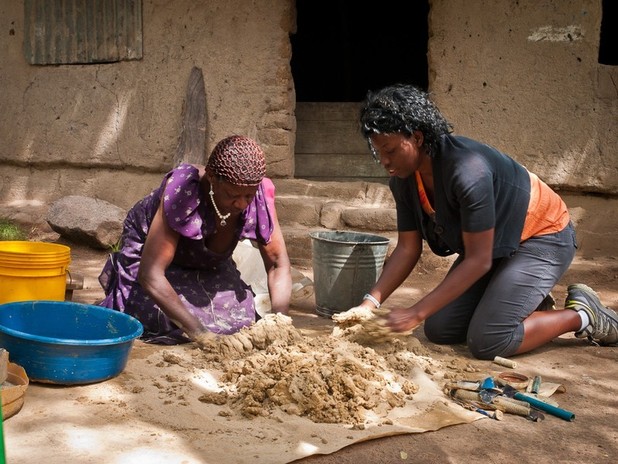February 28, 2012
Prototyping in the field is always an interesting but challenging process. While conducting research in Tanzania, the IDEO.org cookstoves team proves that this process can yield some really helpful insights.
Our IDEO.org cookstoves team has been struck by the challenges of differentiation in the local cookstove market. Many people in Mwanza, Tanzania owned some sort of cookstove, but people often chose durability over efficiency. It was a battle that the improved cookstoves often lose because of the large quantity of poor quality cookstove inventory on the market.
With this in mind, we wanted to test whether the addition of features could elevate the improved cookstoves over one of its main competitors, metal cookstoves without a liner. (The difference between the two stove types is the clay liner, which can help improve the efficiency and reduce the emissions of the stove dramatically.) We conceived of the idea of a clay liner insert that people could buy to add to improved cookstoves. It would allow people to vary the size of their charcoal use, allowing for less charcoal when using the small liner insert.
To test out our idea, we paid a visit to Mama Shigella. A producer of high quality clay stoves for more than 20 years, her workshop was a perfect location to build our prototype. We brought with us two stoves that we had purchased, one that already had a clay liner and another one that was just a metal stove. Mama Shigella taught us how to sift the clay and rice husk ashes (her secret ingredient for stronger stoves), add water and knead the mixture (imagine making bread dough), and then line the clay in the actual stove.
Robin, Emily, and I excitedly threw ourselves into the process. Emily even provided some additional insight from her pottery class days! Our liners were not the prettiest creations, but a solid first effort. We did learn the challenges of quality production. We were also able to share some creative inspiration with Mama Shigella, who had never before thought about the idea of liner inserts or some of the techniques we tried.
And in case you’re wondering, our liner inserts were perfect for our needs. We brought them along with us to our end user interviews the following day. Everyone responded to it positively. We were even able to test the added monetary value that such a feature would bring to the stove. The prototype also added a new level of engagement to our conversations. Prototyping in the field was an unplanned venture, but our research experience is most certainly better for having done it!
















